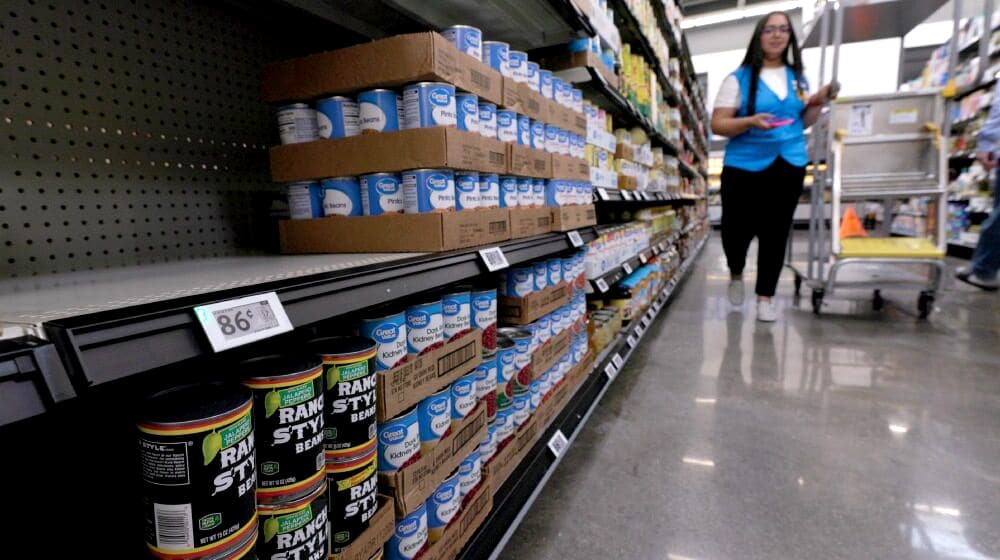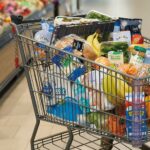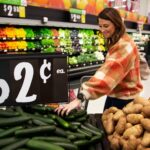
How have your grocery shopping trips been lately? In many ways, grocery retailers and suppliers say business is back to normal after years of upheaval: supply chain challenges have eased, out-of-stocks are lower than ever, and promotions are coming back.
Now if only they could ease shoppers’ sticker shock and stop people from stealing stuff.
FMI – The Food Industry Association’s latest annual report “The Food Retailing Industry Speaks 2024” portrays something of a delicate balance between “normal” and “the new normal.” Retailers and suppliers are looking forward, putting many of the problems of the past behind them, but they’re mindful that shoppers who are distressed by inflation – and others who are so distressed by inflation that they’ll resort to theft – will be some of their biggest challenges in the year ahead.
The good news – retailers and suppliers reported notable declines in supply chain and transportation problems, resulting in a dramatic drop in out-of-stock rates, from 10.7% in 2022 to 6.5% last year, which is even lower than the historical average of 8%. Grocery industry profit margins fell to pre-pandemic levels, which could insulate the industry against accusations that it’s using inflation as an excuse to gouge shoppers.
But that doesn’t mean all is rosy. Two-thirds of grocery retailers and nearly three-quarters of suppliers are concerned that inflation and economic challenges will continue to impact shopper behaviors. And “the number one challenge currently facing the industry has become asset protection,” the report found, “with 85% of food retailers citing increasing theft and fraud as the biggest problems negatively affecting business.”
So what are they doing about it? When it comes to theft, the report found that “retailers are pursuing a range of solutions — from training to technology — to mitigate the problems.” When it comes to inflation-weary shoppers, the solution may be more promotions.
Almost half of all grocery retailers and nearly two-thirds of suppliers predict that the grocery industry will offer more sales promotions in the year ahead, which would come as a relief to shoppers who are tired of paying elevated regular prices. How you find out about those promotions, however, is changing.
68% of grocery retailers say they still advertise their weekly promotions in printed sales circulars, down from 76% who published physical circulars in 2022. Digital circular use is up to 86%. While one might be tempted to conclude that paper circulars are inevitably dying out, it’s important to consider that retailers don’t necessarily believe digital circulars are any more effective. 44% said paper circulars are “very effective” in generating sales, while about the same – 43% – said the same about digital circulars. Grocery brands are more bullish on printed circulars, with 73% advertising in them and 55% considering them very effective – far more than the 38% who say the same about digital circulars.
Digital circulars or not, virtually all retailers said they are using technology in some way to personalize or customize shoppers’ experiences. And many are tinkering with new and emerging technologies in-store. Nearly half are using mobile checkout systems, with an additional 13% planning to do so in the year ahead. A quarter of retailers are experimenting with dynamic pricing software, with 14% planning to do so, which will allow them to change prices instantly in response to demand. 24% are using electronic shelf labels, with 29% planning to do so. Fewer stores are using smart shopping carts, but that number is rising, while completely cashierless stores are falling out of favor entirely.
After all, self-checkouts are where thieves tend to steal stuff. So more retailers have been scaling back their reliance on the do-it-yourself trend. Nevertheless, retailers still report that 44% of all transactions last year were at self-checkout lanes – so despite some retailers souring on self-checkout, they’re unlikely to go away altogether.
In the end, it turns out that among the biggest challenges for traditional grocery retailers are nontraditional grocery retailers. “At a time when shoppers are heavily focused on inflation and a challenging economy,” the report notes, “supercenters surpassed conventional supermarkets to top the list of formats having the biggest competitive impact on retailers.” More shoppers are heading to big-box stores in an effort to save money. FMI cited earlier research that found “shoppers are traveling a distance — past closer retailers — to primary stores offering lower prices.” Traditional grocery retailers are trying to compete by “emphasizing a quality, upscale shopping experience as a service differentiation strategy.”
So hopefully you’ll be seeing more deals in the year ahead, along with more fully-stocked shelves and more helpful technology – and fewer thieves trying to get something for nothing. Times may be tough, but if retailers can succeed in cracking down on crime, that could make the grocery shopping experience better for us all.
Image source: Walmart










